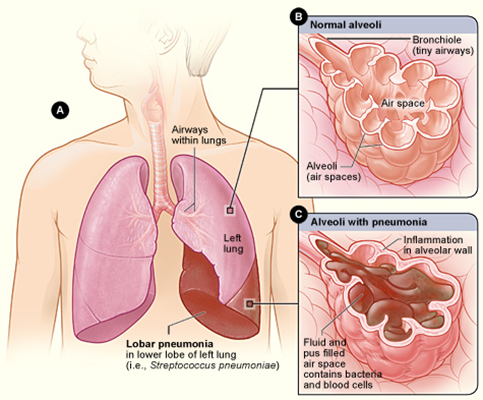MORE INFORMATION
Pneumonia What Is Pneumonia?

Pneumonia is an infection that affects one or both lungs. It causes the air sacs, or alveoli, of the lungs to fill up with fluid or pus. Bacteria, viruses, or fungi may cause pneumonia. Symptoms can range from mild to serious and may include a cough with or without mucus (a slimy substance), fever, chills, and trouble breathing. How serious your pneumonia is depends on your age, your overall health, and what caused your infection.
To diagnose pneumonia, your healthcare provider will review your medical history, perform a physical exam, and order diagnostic tests such as a chest X-ray. This information can help determine what type of pneumonia you have.
Treatment for pneumonia may include antibiotic, viral, or fungal medicines. It may take several weeks to recover from pneumonia. If your symptoms get worse, you should see a healthcare provider right away. If you have severe pneumonia, you may need to go to the hospital for antibiotics given through an intravenous (IV) line and oxygen therapy.
Some types of pneumonia can be prevented by vaccines. Good hygiene and heart-healthy living can also lower your risk for pneumonia.


